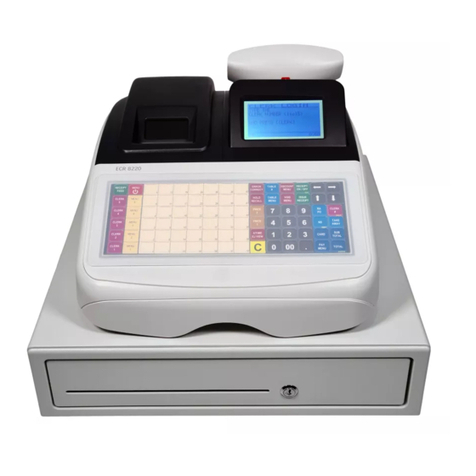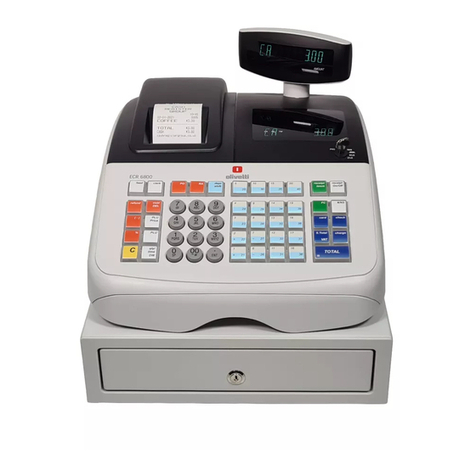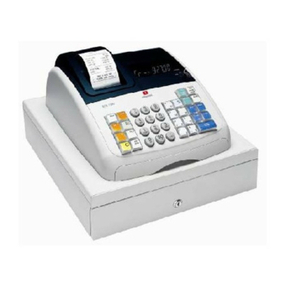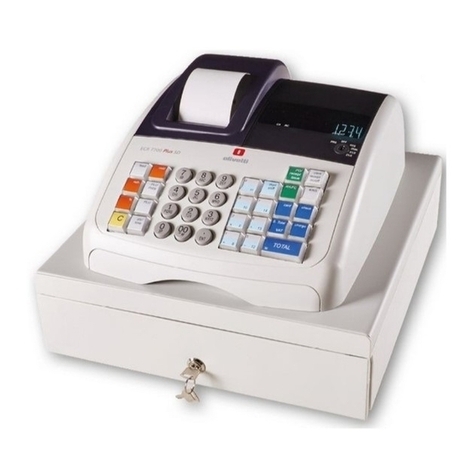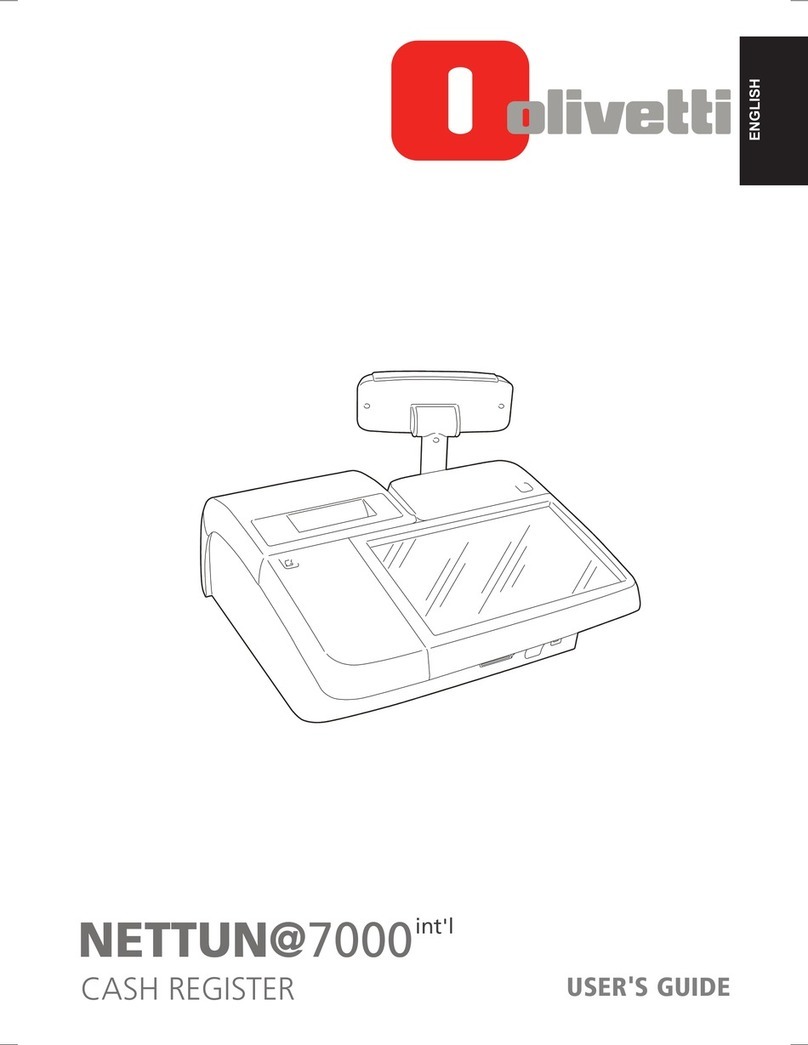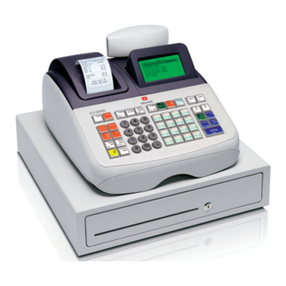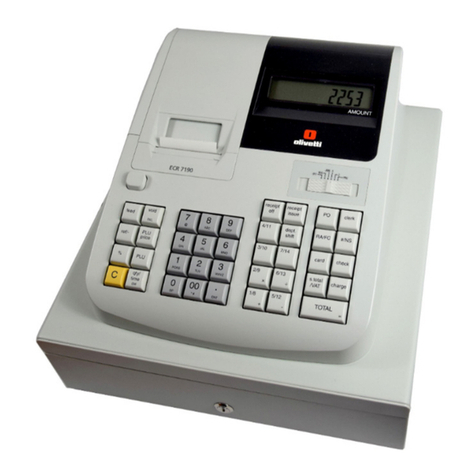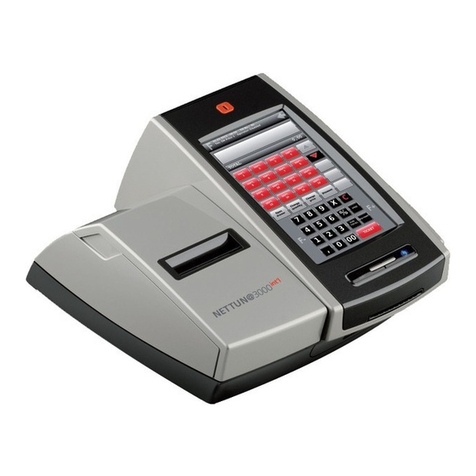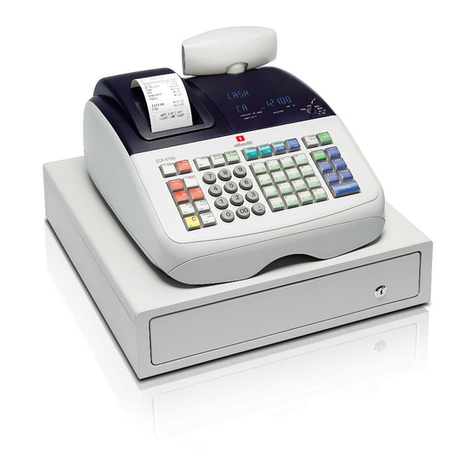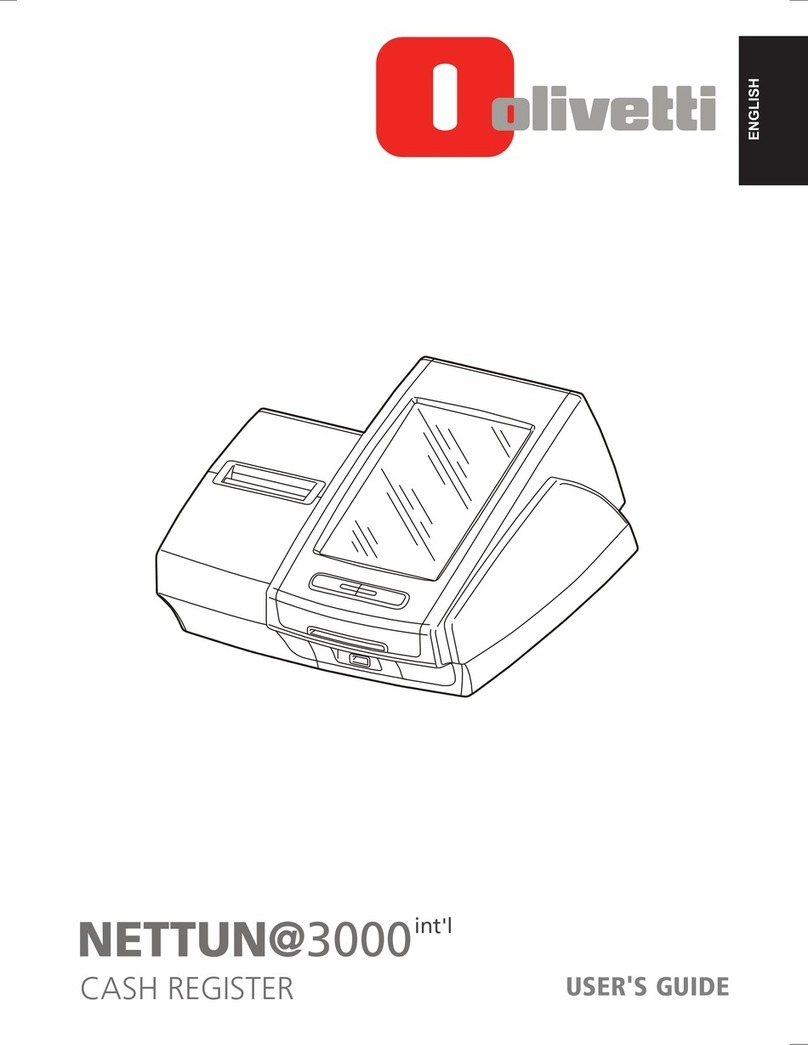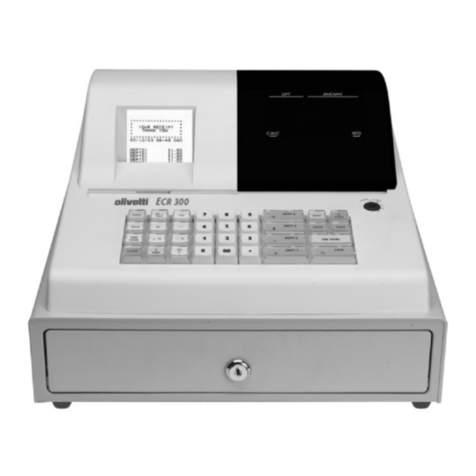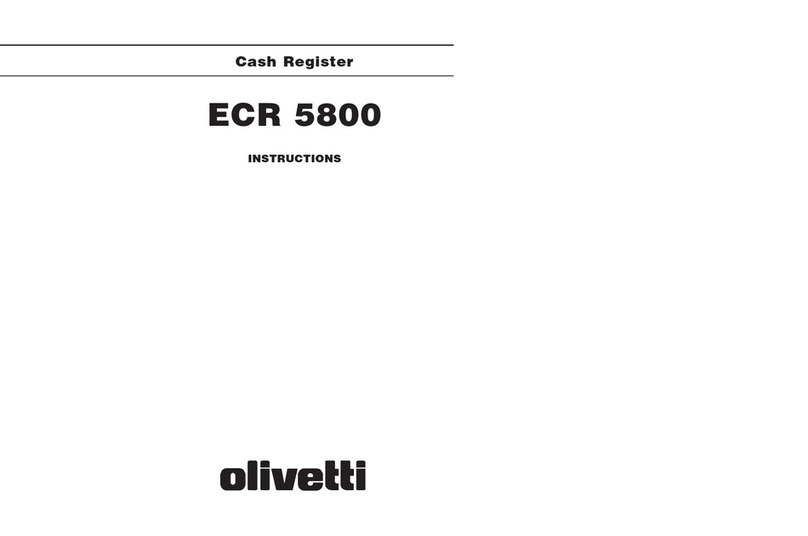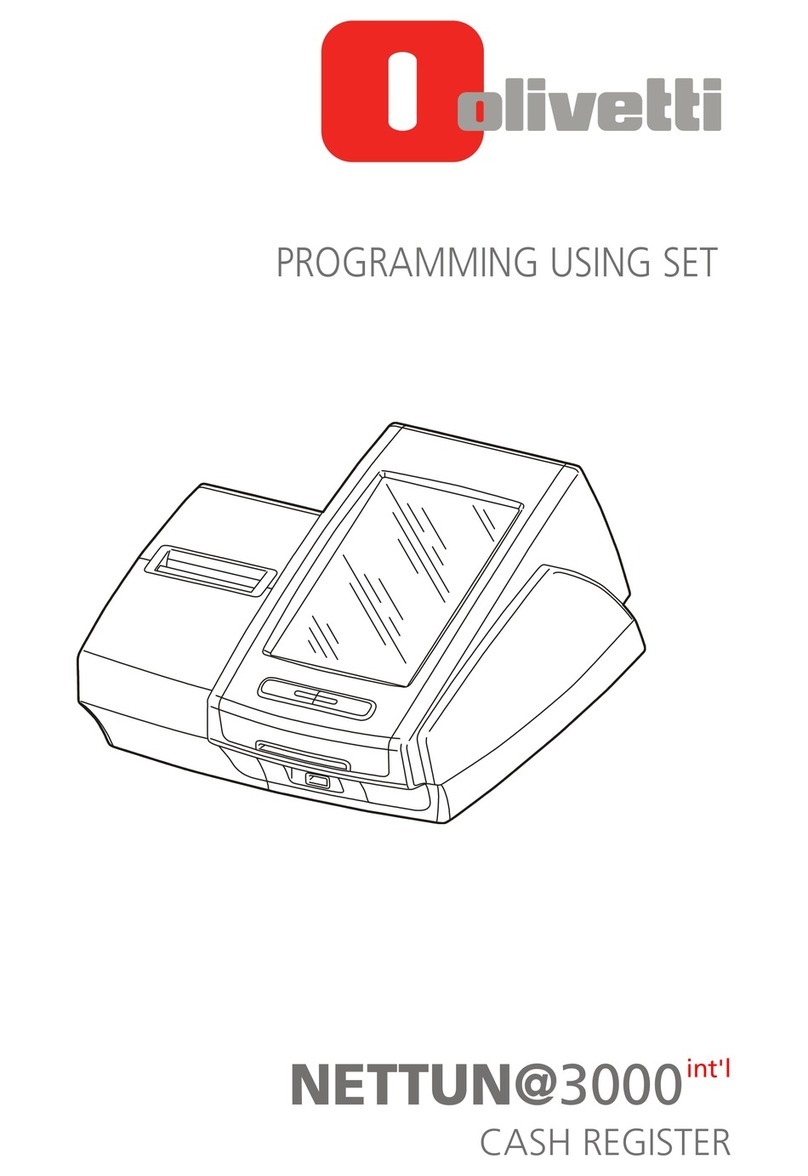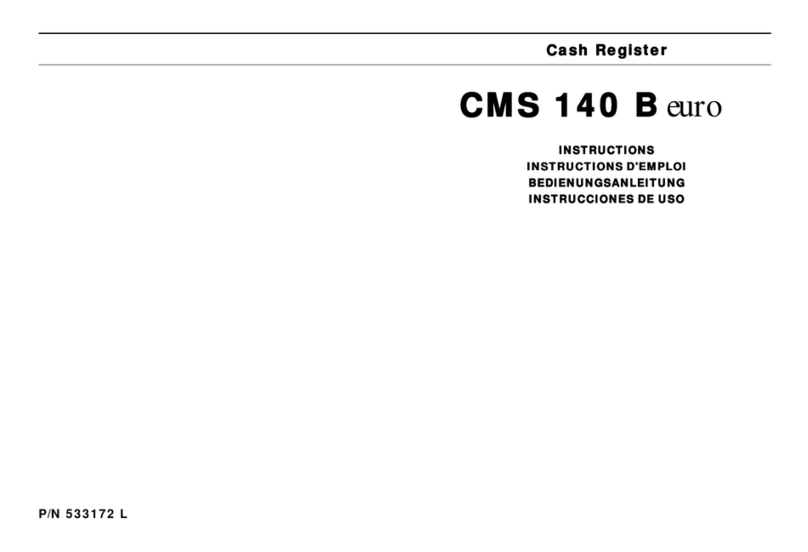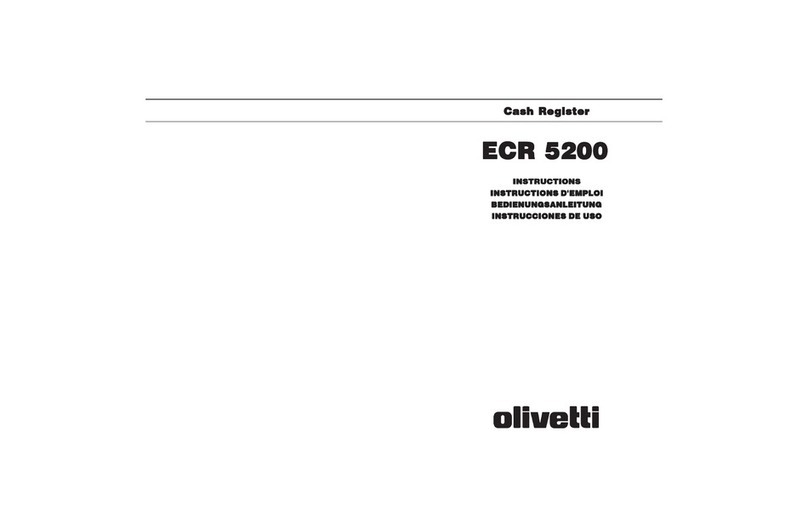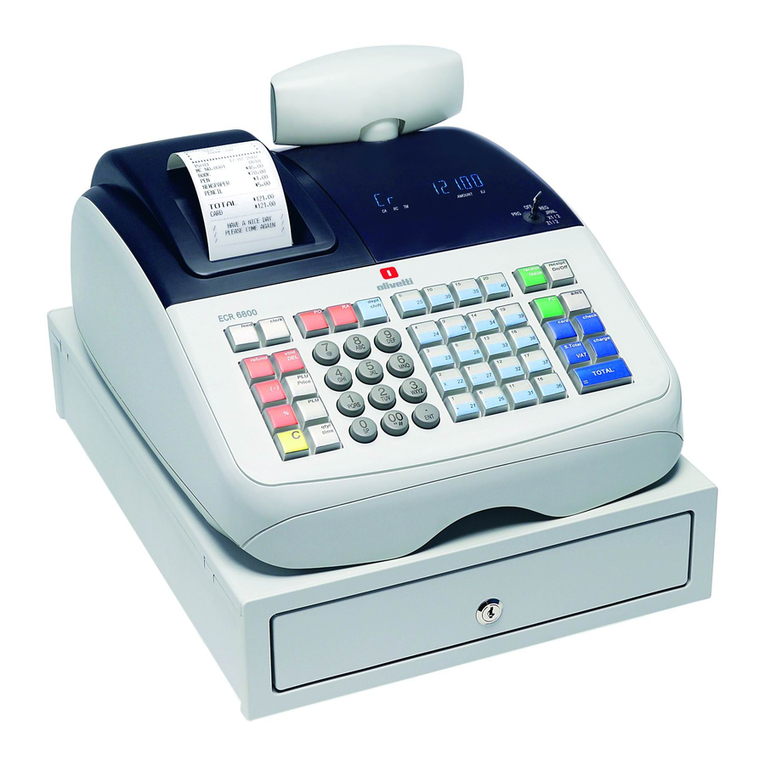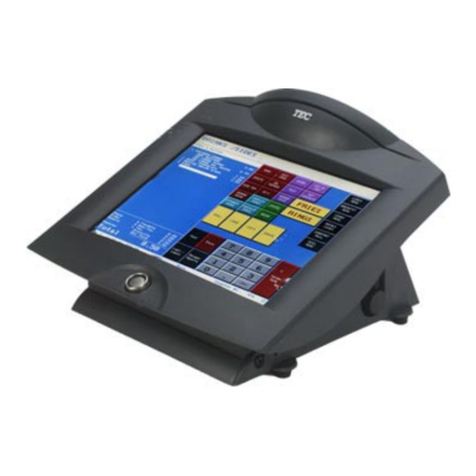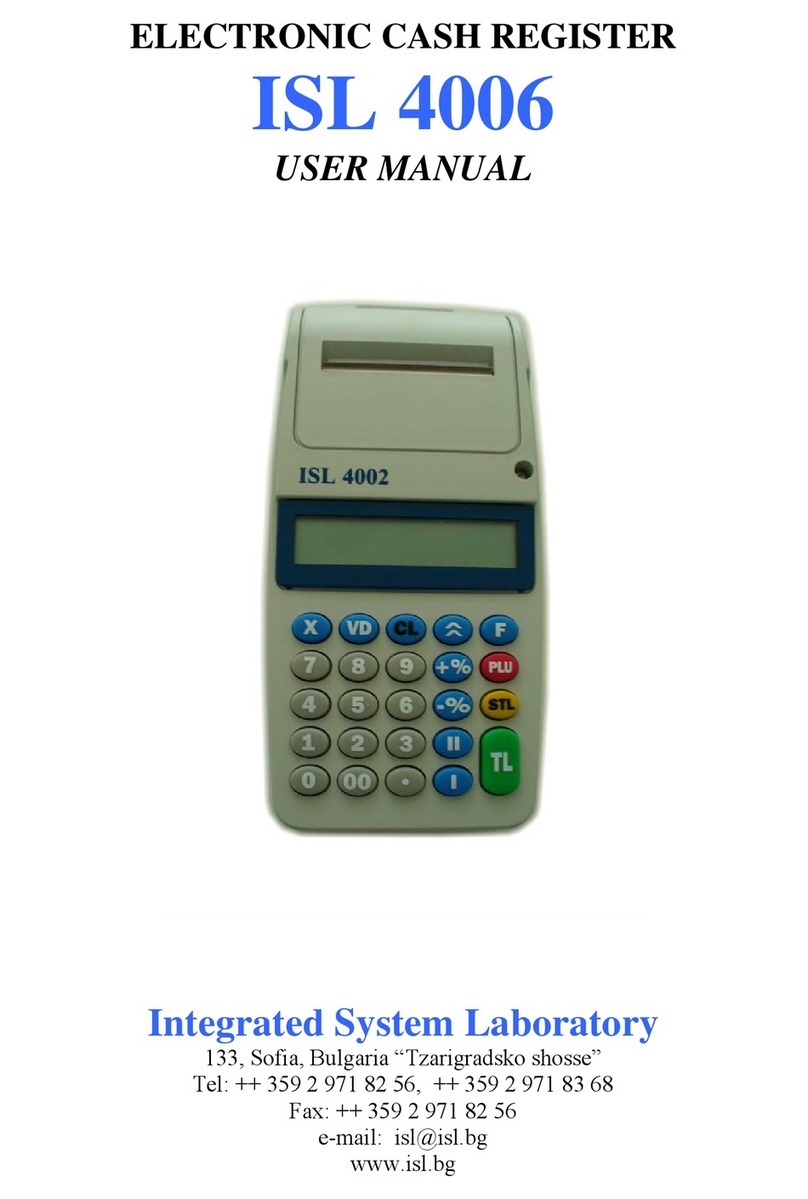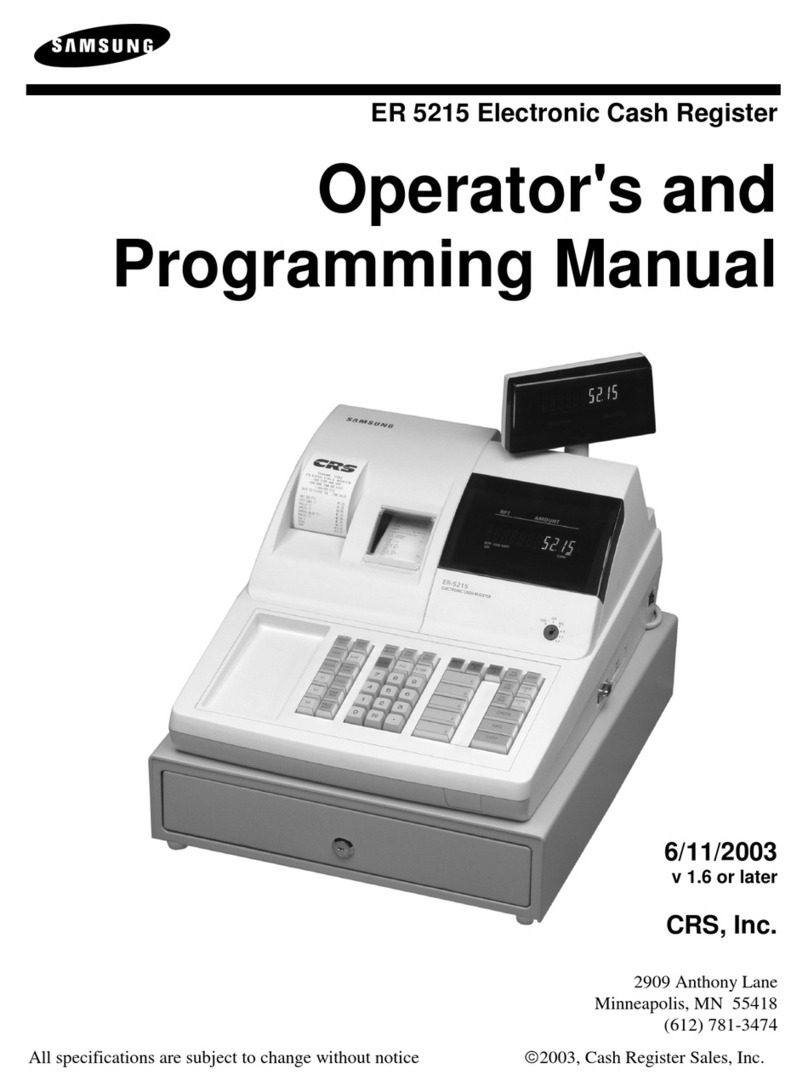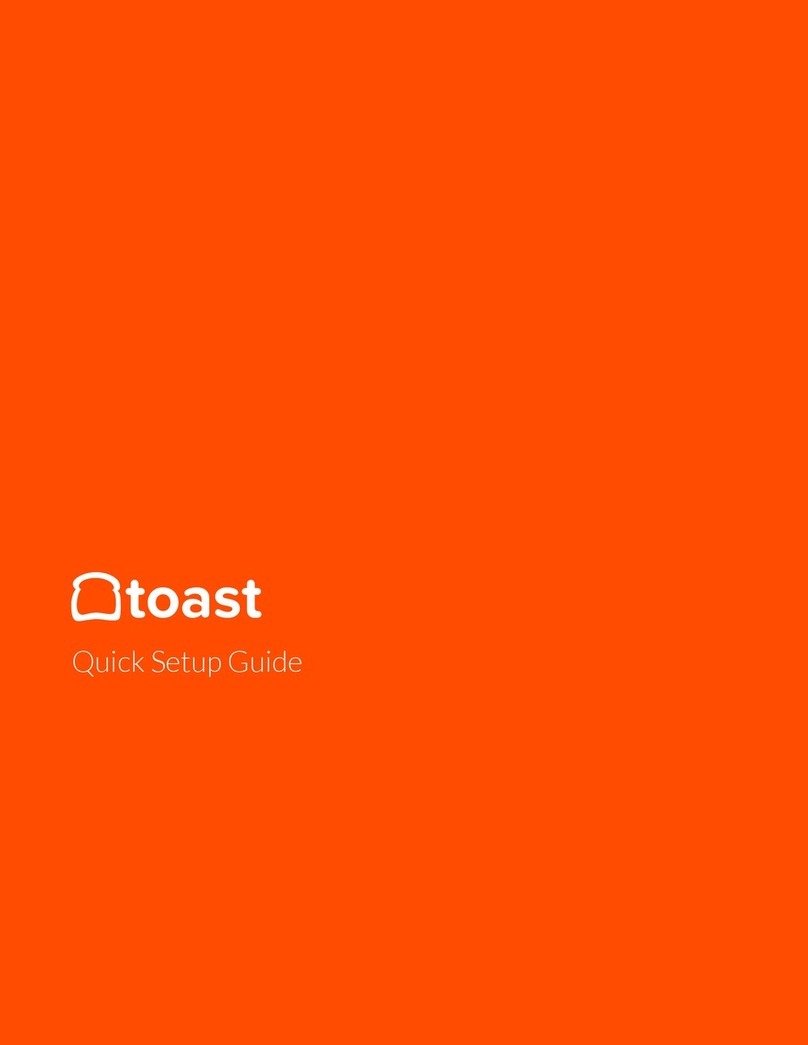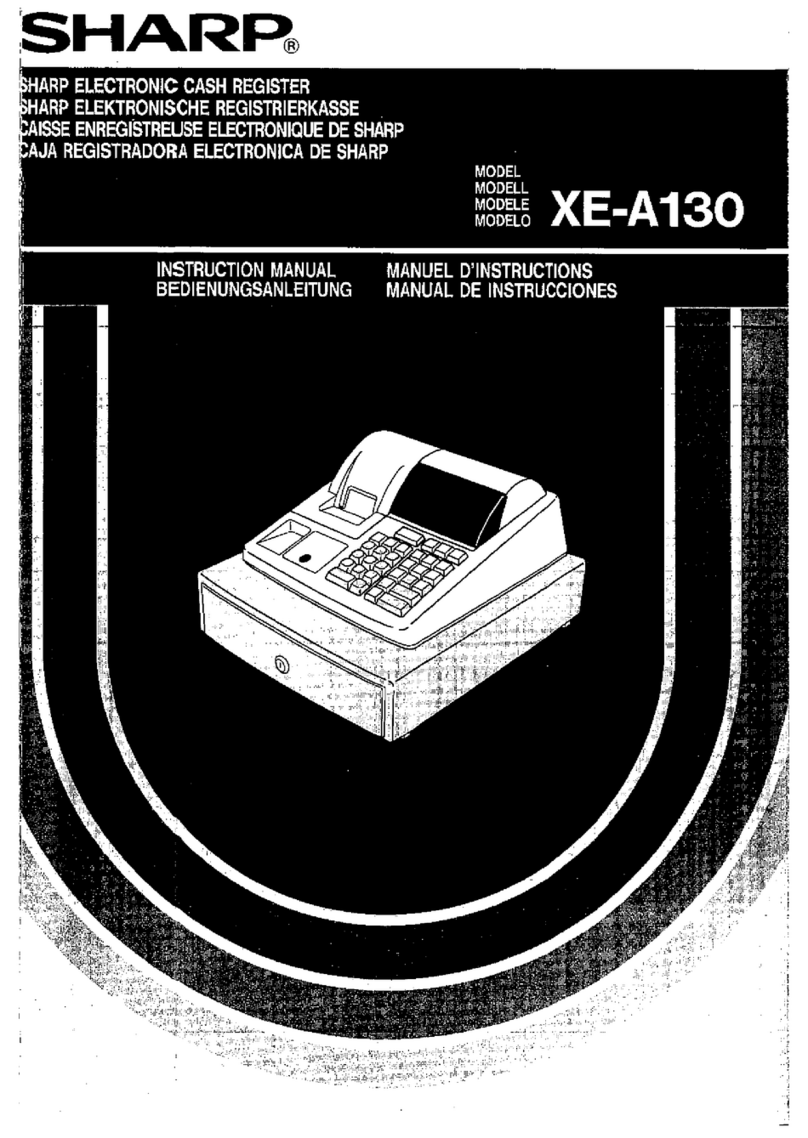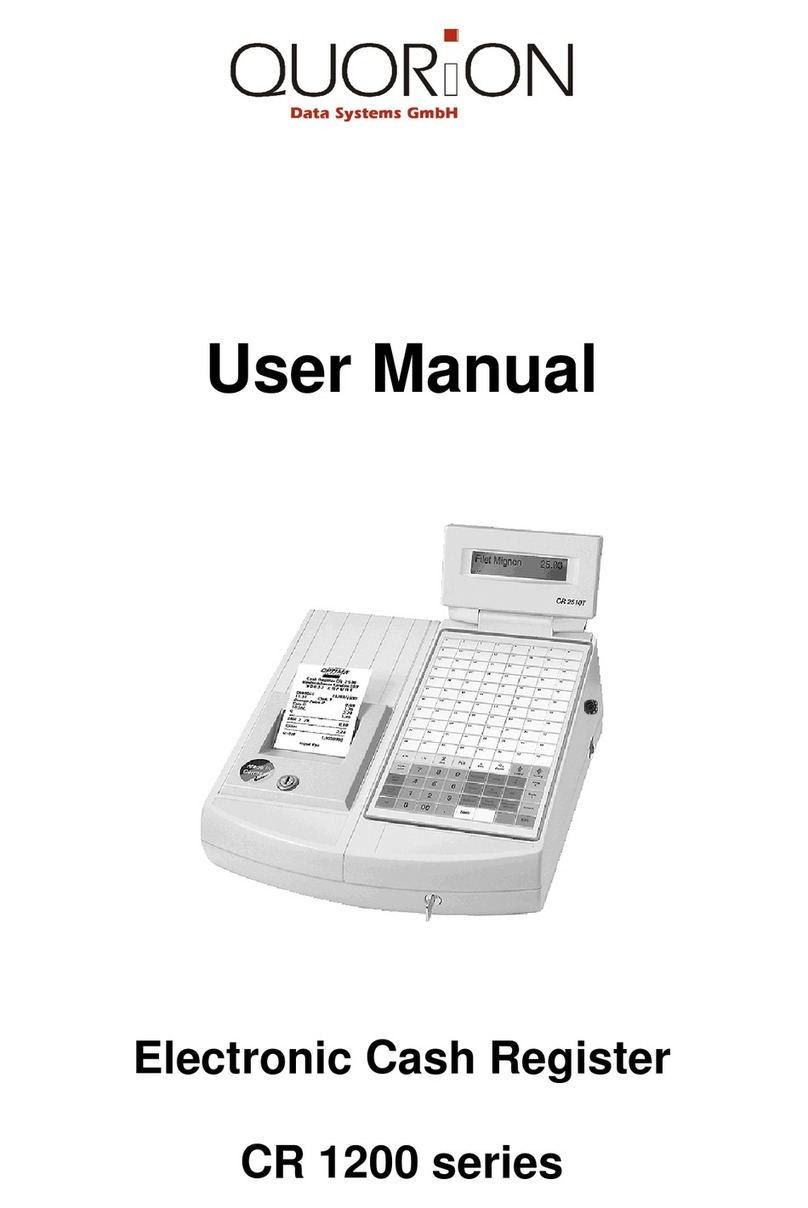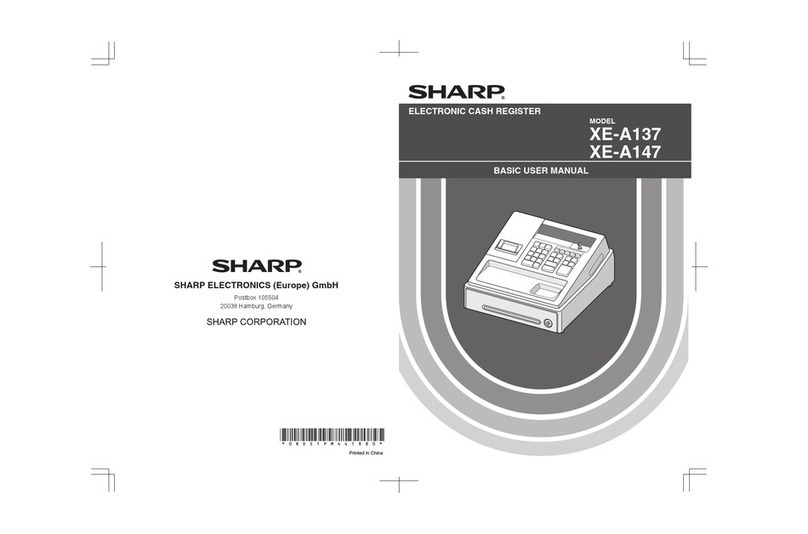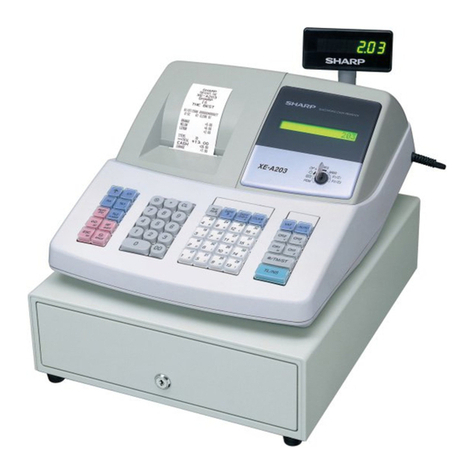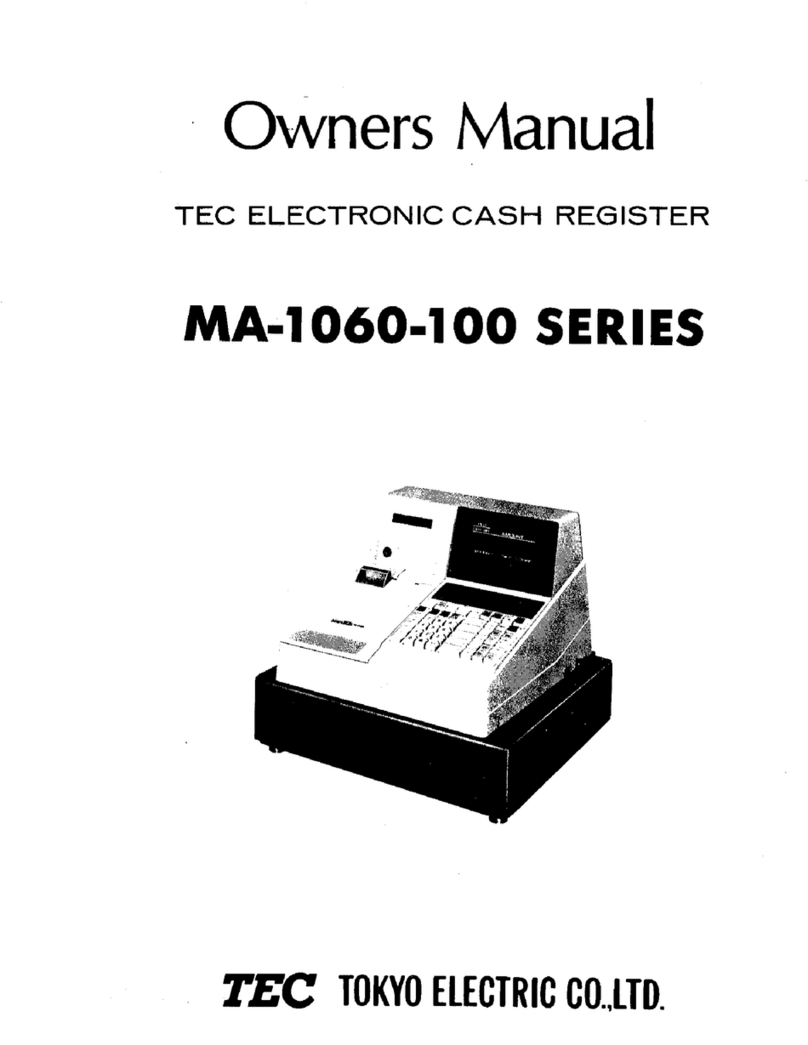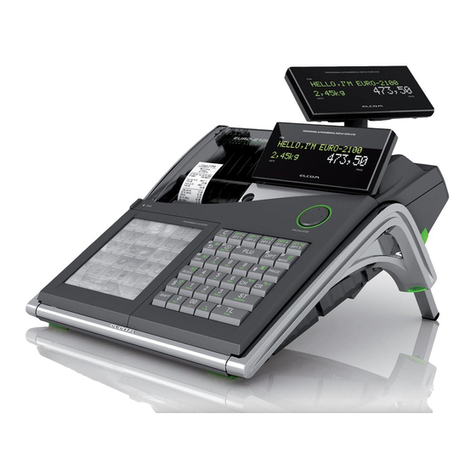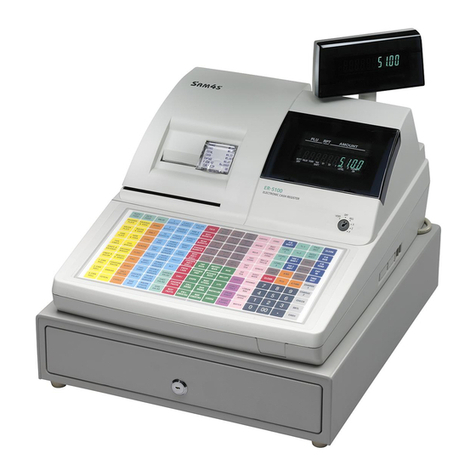
2
Transaction Keypad Functions
With the transaction keypad sheet installed and with refer-
ence to figure 5:
1. - Advances the receipt or journal paper one line
feed; advances the paper continuously when held down.
2. - Toggles the cash register between printing and
not printing the sales receipt in the REG or MGR mode.
3. - Opens a table, calls back the items ordered at a
determined table and closes the table when the
transaction is concluded.
4. - Confirms an entered clerk number. Used during
caption programming.
5. - As the Guest key, enters the number of guests at
a determined table. As the Tray T-Tray key, provides the
order total of a determined guest tray in a guest party.
6. - As the divide payment key, divides the total
amount among the guests at a table. As the Extra Invoice
key, issues an additional invoice requested by the guest
after the ordinary invoice is issued.
7. - As the New balance key, temporarily closes the
orders of a determined table until the final invoice is
issued. As the Hold/recall key, holds and then recalls a
sales transaction so that a second transaction can be
performed in the meantime.
8. - Registers a preset price of an individual article to
the appropriate department.
9. - As the Review key, prints a proforma receipt
before finalizing the sales transaction, As the Pay Trans
key, transfers payment from one form of payment to
another after the finalization of a sales transaction.
10. - Allows price entries for departments 6-10. For
departments 11-60, press this key, then manually enter
the department number using the numeric keypad and
then press this key again.
11. - Registers sales that are put on a credit card that
is alternative to Credit Card 1 or the one used for Charge
tenders.
12. - Registers sales that are put on a credit card that
is alternative to Credit Card 2 or the one used for Charge
tenders.
13. - Used to manually enter a price for a PLU article.
14. - Used to enter the first price assigned to a
determined PLU.
15. - - Used together with [PLU page], register
the prices associated to the related PLU article.
16. - Used to enter the second price assigned to a
determined PLU.
17. - - Direct access to PLU prices. PLU Page
1 (default) is used to select PLUs 1 to 42, PLU Page 2 to
select PLUs 201 to 242 and PLU Page 3 to select PLUs
301 to 342. You can program the PLUs associated to
these three pge keys.
18. - Subtotals a sale, and used for the programming of
VATrates.
19. -Totalsexactcashtransactions,computeschange
and totals transactions that are split tendered with check
or credit card and cash together. Prints one or more
copies of the last sales receipt.
20. - Registers sales paid by check. Confirms the
clerk three-digit code entered.
21. - Registers sales that are charged.
22. - - Departments 1 through 5, to enter single
or multiple item sales to a particular department. When
pressedafter ,registerstoDepartments6through 10.
23. - Enters a decimal point for defining product
quantities with decimals during sales transactions.
24. - / -Input amounts, indicate how many
times a particular item repeats, add and subtract
percentage rates and input department code numbers.
25. - Clears an entry made from the numeric keypad
or with before finalizing a transaction with a
Department or function key. Also used to clear error
conditions.
26. - Deletes the last item entered, and corrects a
particular entry after it is processed and printed, or full
entries after a subtotal.
27. - Multiplies [DEPARTMENT] or entries,
toggles between displaying the current date and the
current time. Press three times to view the number of
sales data lines still available in the Electronic Journal.
28. - Subtracts an item that is returned for refund.
29. - As the %2 key, when programmed accordingly
subtracts or adds a percentage from an item or sales
total.As the PO key,registers any money taken outof the
cash drawer that is not part of a sale.
30. - As the %1 key, when programmed accordingly
subtracts or adds a percentage from an item or sales
total. As the RA key, registers any money received on
account that is not part of a sale; for example, the start-
up money put in the drawer at the start of each business
day can be registered as an RA.
